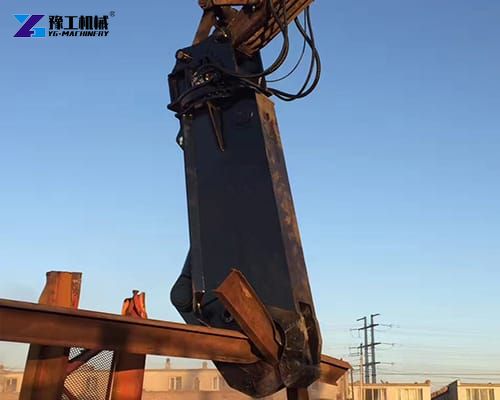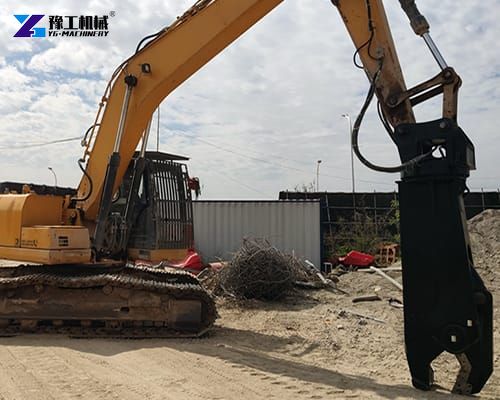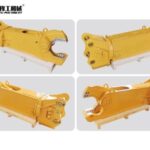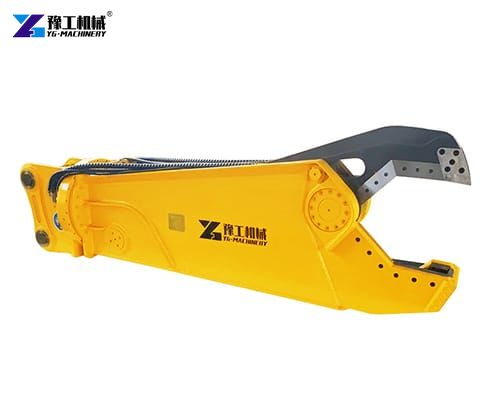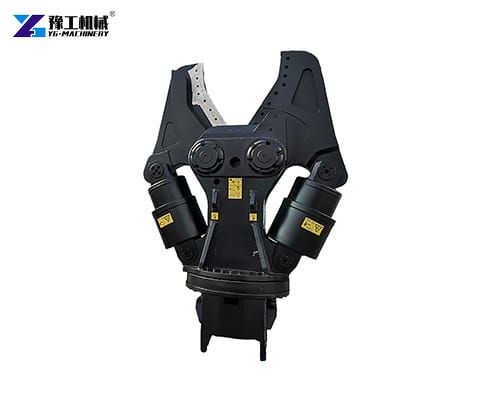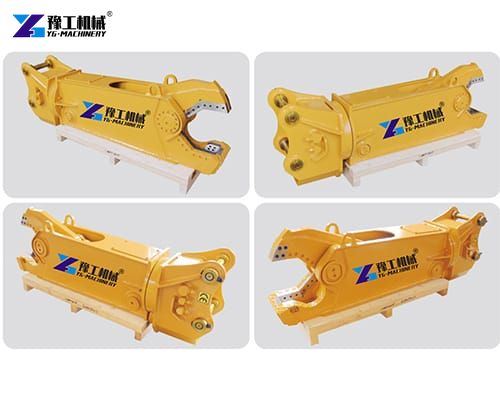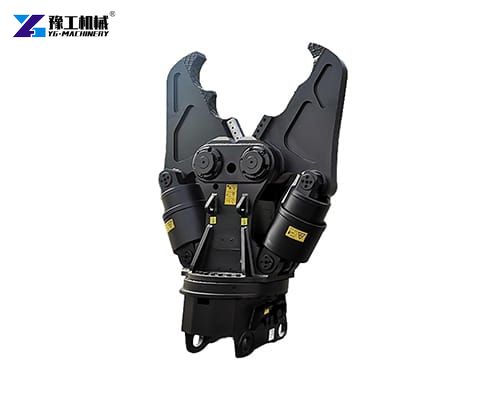Excavator demolition shear is a hydraulic attachment mounted on excavators, designed to cut, crush, and demolish hard materials such as concrete, rebar, steel beams, and other structural components. It provides a controlled and efficient solution. They are engineered to handle heavy-duty tasks and other dense materials with minimal vibration and noise.

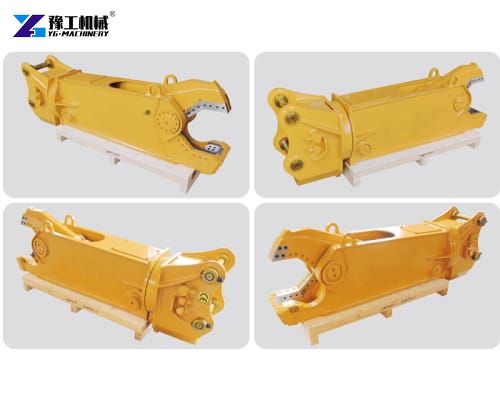
Parameters of the Excavator Demolition Shear
| Model | YG50R | YG100R | YG130R | YG180R | YG310R | YG410R |
| Forearm mounted model | 6-9T | 10-12T | 13-17T | 18-27T | 28-39T | 39-50T |
| Large arm installation model | 4-6T | 7-10T | 8-12T | 14-18T | 20-28T | 28-39T |
| Work pressure | 35Mpa | 35Mpa | 35Mpa | 35Mpa | 35Mpa | 35Mpa |
| Overall length | 2000mm | 2200mm | 2300mm | 2900mm | 3500mm | 3900mm |
| Overall weight | 650KG | 1100KG | 1220KG | 2100KG | 3300KG | 4700KG |
| Maximum opening | 290mm | 375mm | 375mm | 445mm | 565mm | 670mm |
| Throat depth | 290mm | 395mm | 395mm | 525mm | 630mm | 720mm |
| Front-end crushing force | 46T | 60T | 60T | 85T | 135T | 172T |
| Central crushing force | 115KN | 150KN | 150KN | 221KN | 351KN | 464KN |
How Does An Excavator Demolition Shear Work?
- Hydraulic Power System
At the heart of every demolition shear is a robust hydraulic system that converts the excavator’s hydraulic power into cutting force. The shear’s hydraulic cylinder applies pressure to a pivot point, driving the movable blade toward the fixed blade with immense force. - Blade Design and Material
The blades of a demolition shear are engineered for durability and cutting efficiency. They are typically made from high-strength, wear-resistant steel alloys. - Jaw Opening and Cutting Capacity
The jaw opening determines the maximum size of material the shear can process. Industrial-grade shears can open, enabling them to tackle structural beams, reinforced concrete columns, and large metal profiles.
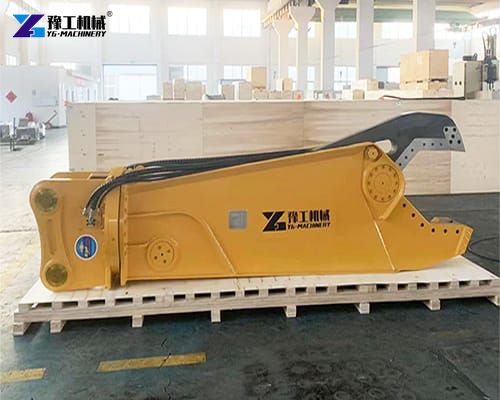
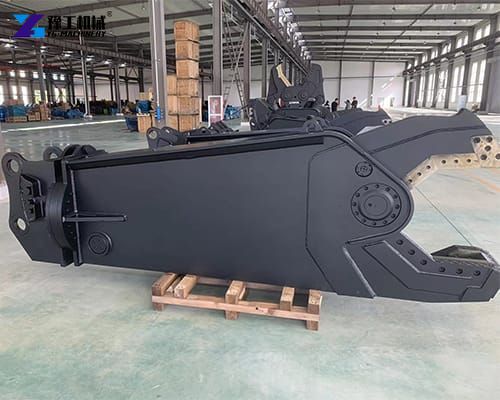
Applications of Hydraulic Shear for Excavator
- Structural Demolition
Concrete Dismantling: Cutting through reinforced concrete walls, slabs, and foundations.
Steel Frame Deconstruction: Safely removing I-beams, columns, and trusses from industrial buildings.
Bridge and Infrastructure Demolition: Precision cutting of bridges, overpasses, and tunnels. - Metal Recycling and Scrap Processing
Vehicle Dismantling: Cutting car bodies, engines, and frames in automotive recycling yards.
Shipbreaking: Slicing through hulls and superstructures in marine demolition.
Industrial Scrap Handling: Processing heavy machinery, tanks, and pipelines. - Disaster Recovery and Emergency Response
Post-Earthquake Cleanup: Excavator demolition shear can be used to remove collapsed structures and debris.
Fire Damage Mitigation: Cutting through burned-out frameworks to access trapped materials. - Underwater Demolition
Specialized submersible shears enable underwater cutting of piers, docks, and offshore structures.

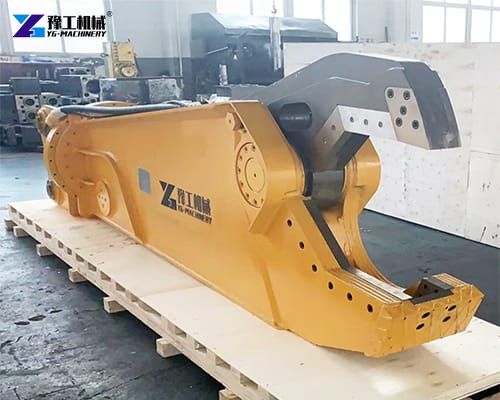
Choosing A Suitable Excavator Metal Shear
- Excavator Compatibility
Match the shear’s weight and hydraulic requirements to your excavator’s specifications. Overloading the machine can cause mechanical failures or instability. - Jaw Design and Cutting Force
Consider the excavator demolition shear’s maximum cutting force and jaw configuration. Wider jaws handle bulkier materials, while narrow jaws offer precision for intricate cuts. - Material Type and Thickness
Ensure the shear’s blade hardness and design align with the materials you frequently encounter. For example, carbide-tipped blades are ideal for abrasive substances like reinforced concrete.
